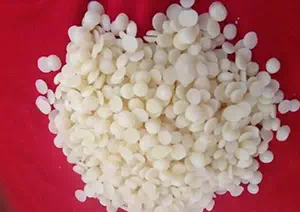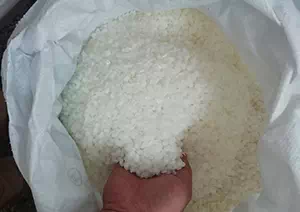Microcrystalline Wax Information
Chemical Name | Ceresin Wax |
Other Name | CERIN; Ceresine wax; Microcrystalline Wax |
CAS | 8001-75-0 |
EINECS | 232-290-1 |
Type | Food additives; Inorganic salt; Cosmetic raw materials; Organic raw materials |
Molecular Formula | C30H50O2 |
Molecular Weight | 0 |
Microcrystalline Wax Properties
Melting point | 61-78° |
density | 0.91-0.92 |
Fp | 113 °C |
solubility | Soluble in benzene, chloroform, naphtha, hot oils, petroleum ether, 30 parts absolute ethanol, turpentine, carbon disulfide, and most organic solvents. Insoluble in water. |
form | Solid |
color | White waxy |
Odor | Odorless |
Water Solubility | Insoluble in water |
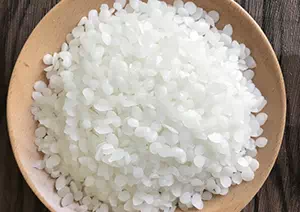
What is Microcrystalline Wax?
Microcrystalline wax, as a special substance with significant applications in numerous fields, possesses a series of unique properties. It is odorless and tasteless, presenting a pure white color, and its form is amorphous non-crystalline solid wax. This unique appearance and characteristics make it stand out among numerous waxy substances.
The acquisition method of microcrystalline wax is quite distinctive. It is obtained from the residue after petroleum distillation through a series of fine and complex processing techniques. Specifically, first, the specific components in the petroleum distillation residue are extracted through solvent extraction, and then chemical treatment is carried out to obtain this high-boiling-point long-chain hydrocarbon.
In terms of chemical composition, the composition of microcrystalline wax is mainly composed of C31-70 branched-chain saturated hydrocarbons, and it also contains a small amount of cyclohydrocarbons and branched-chain hydrocarbons. This specific chemical composition endows it with many excellent physical properties. For instance, its melting point ranges from 60 to 85 degrees Celsius. This characteristic enables it to maintain a relatively stable state in different temperature environments. Moreover, it also has excellent miscibility and can be mixed with various mineral waxes, plant waxes and hot oils, which provides a wide range of possibilities for its application in many fields.
From the perspective of physical properties, the particles of microcrystalline wax are relatively large, which enables it to better play the role of filling and supporting in some application scenarios. Meanwhile, it has excellent ductility, just like elastic rubber, and can undergo a certain degree of deformation when subjected to external forces without easily breaking. It is particularly worth mentioning that it can still maintain good stability in low-temperature environments and is not prone to cracking. When mixed with liquid oil, microcrystalline wax demonstrates its unique property of preventing oil separation and sedimentation, just like a loyal guardian that can ensure the uniformity and stability of the mixed system.
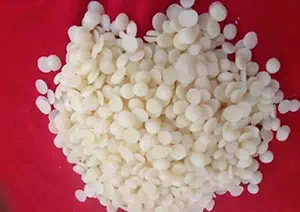
Among them, microcrystalline wax with a melting point of 77-80 ℃ has more or less ductility. This ductility makes it similar to soft wax to a certain extent, giving people a soft and elastic touch. Microcrystalline wax with a melting point of 88-90 ℃ is relatively hard in texture. Its form is quite similar to that of mountain wax (lignite wax), as if it were a solid substance formed over time in nature.
Microcrystalline wax, in essence, is a special type of wax obtained by deoiling petroleum. In the vast field of cosmetics and beauty products, microcrystalline wax plays an indispensable role. It can be used as a thickener to make the texture of the product thicker, enhance the stability and usability of the product. As an adhesive, it can closely combine various components together, ensuring that the product will not stratify or separate during use. Meanwhile, it is also an excellent emollient that can moisturize the skin and make it feel soft and smooth. Under normal circumstances, microcrystalline wax is regarded as an ideal substitute for paraffin.
Compared with common paraffin, microcrystalline wax has many significant differences. Its crystals are small. These tiny crystals are like countless fine gemstones, closely arranged together, endowing it with a unique texture. In terms of color, microcrystalline wax is usually darker, as if carrying more connotations and mystery. Moreover, it has greater stickiness, just like glue with strong adsorption force, and can adhere better to the surface of other objects. Its density is also higher, which means that under the same volume, microcrystalline wax has a greater mass and gives people a more solid feeling. Not only that, the price of microcrystalline wax is relatively low, which gives it a certain advantage in market competition. More importantly, it has better elasticity than paraffin. This elasticity stems from its nonlinear chain structure, which enables it to quickly return to its original state after being subjected to external forces, just like having a tenacious vitality.
Due to its unique nonlinear chain structure, microcrystalline wax exhibits excellent elasticity and bonding performance. According to the detailed introduction on Wikipedia, microcrystalline wax has a smaller and thinner crystal structure. This fine structure makes it more malleable than paraffin. International Group, a leading enterprise in the field of microcrystalline wax manufacturing, once pointed out: "The fine crystal structure of microcrystalline wax enables it to combine perfectly with solvents or oils, preventing them from precipitating out of the structure." This characteristic further highlights the unique value and advantages of microcrystalline wax in numerous application fields.
Microcrystalline Wax Uses
Among numerous waxy substances, microcrystalline wax has attracted much attention due to its unique properties and wide range of applications. Microcrystalline wax itself presents a pure color as white as jade, as if it were a flawless jade meticulously carved by nature. When it rubs against other objects, it will emit tiny glimmers of light, just like the twinkling stars in the night sky. This unique optical property makes it very beneficial in the production of light-colored products.
Microcrystalline wax not only has unique features in appearance, but also performs exceptionally well in terms of performance. It has excellent oil absorption performance, just like an efficient "oil collector", capable of quickly and in large quantities absorbing oil. Meanwhile, it also has the ability to form stable and uniform pastes with various solvents and waxes. This ability enables it to blend perfectly with other ingredients in various formulations, forming a uniform and stable system. In addition, microcrystalline wax also has an emulsifying effect, which can ingeniously combine originally immiscible substances together, just like a highly skilled blending master, allowing various components to coexist harmoniously.
It is precisely because of these excellent properties that microcrystalline wax has significant application value in many fields. In the production of shoe polish, microcrystalline wax can enhance the gloss and adhesion of shoe polish, making the surface of leather shoes brighter and more durable. In the production of automotive wax, it can enhance the hardness and wear resistance of the wax, providing more reliable protection for the car's paint surface. As an important component of polishing wax, microcrystalline wax can make the surface of objects smoother and finer, restoring their original luster. In floor wax, it can enhance the water resistance and durability of the wax, making the floor easier to clean and maintain. For traditional Chinese medicine pills, microcrystalline wax can play a certain coating role and protect the active ingredients of the medicine. In the preparation of protective agents, it can form a strong protective film to prevent items from being eroded by the external environment. In candle manufacturing, microcrystalline wax can improve the burning performance and appearance quality of candles. In the production of wax toys, it can make the toys more sturdy and durable with a smooth surface. In terms of dental materials, the biocompatibility and plasticity of microcrystalline wax make it an ideal material for making dental models, etc. In the field of cosmetics, microcrystalline wax can provide good texture and stability for cosmetics, making them easier to apply and use.
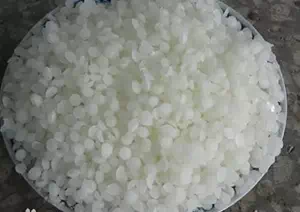
In addition to the direct applications mentioned above, microcrystalline wax can also be used as a paraffin modifier. When an appropriate amount of microcrystalline wax is added to paraffin, it is like injecting new vitality into the paraffin, which can significantly improve the plasticity of the paraffin. This modified paraffin wax becomes softer and easier to process, making it more suitable for the production of materials such as waterproof and moisture-proof paper. Paraffin modified by microcrystalline wax can better fill the fiber gaps of paper, forming a dense waterproof and moisture-proof layer, thereby effectively improving the waterproof and moisture-proof performance of the paper.
Microcrystalline wax is a refined synthetic wax with properties similar to microcrystals. Its characteristic of good gloss enables it to add a bright appearance to products in many applications. The characteristic of high melting point endows it with better thermal stability, enabling it to maintain good performance even in some high-temperature environments. The advantage of its light color ensures that it will not have a negative impact on the color of light-colored products when making them. Its structure is compact, hard and smooth. These physical properties enable it to perform better when mixed with other substances, and it can melt with various natural waxes, just like a wonderful chemical reaction between them. When mixed with low-grade wax, microcrystalline wax can increase the melting point of the low-grade wax, improve the performance of the coarse wax, and bring new vitality and vigor to the originally poorer-performing wax substances.

